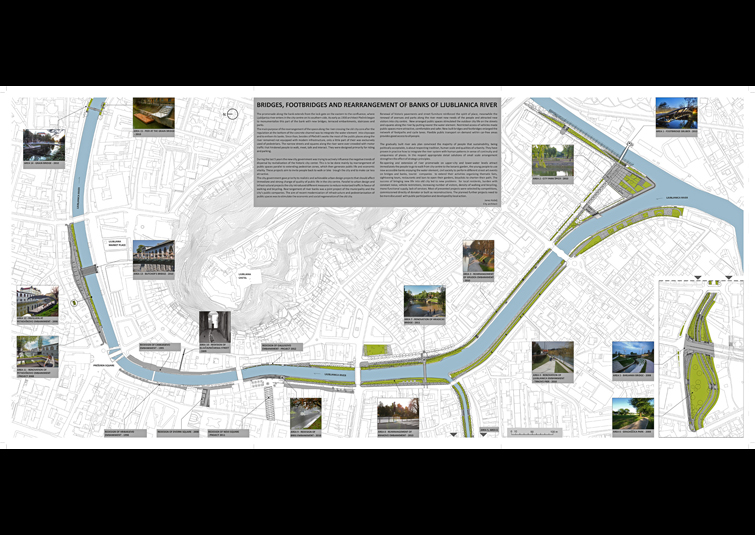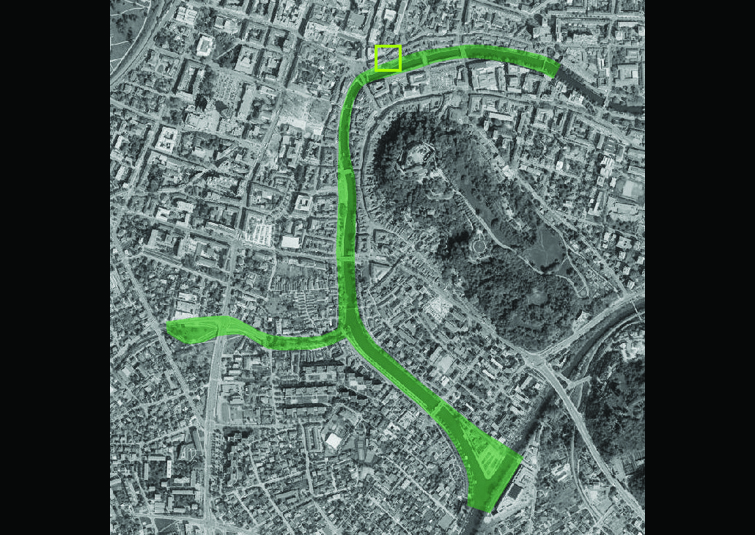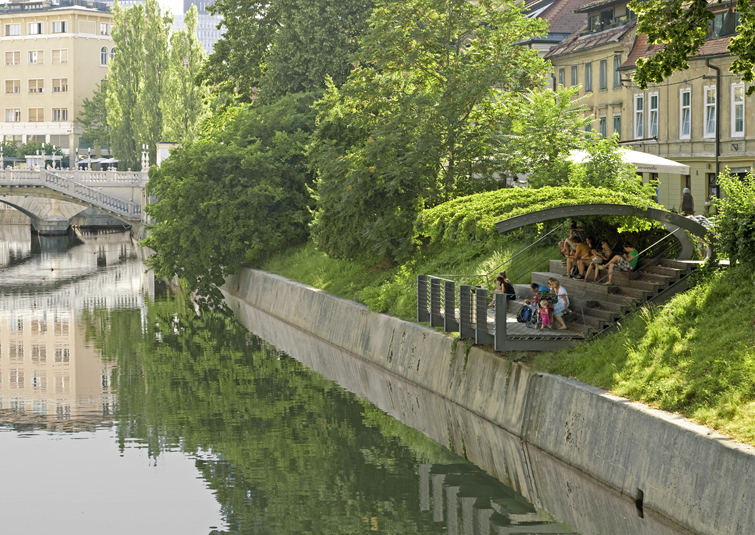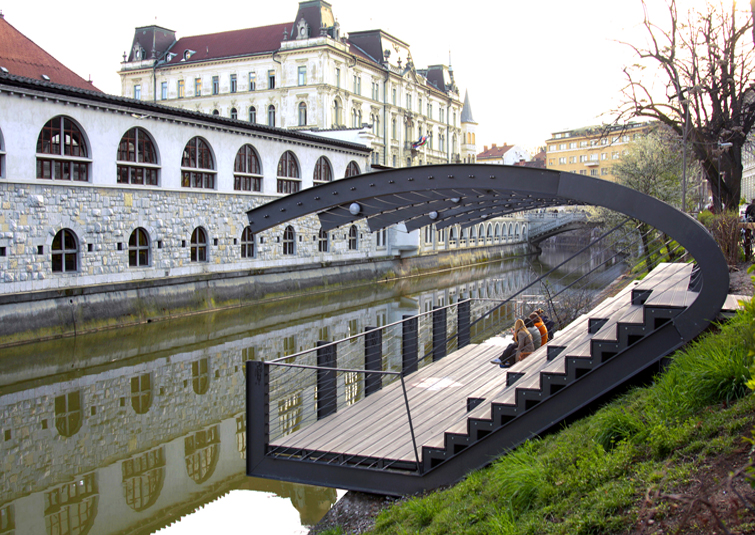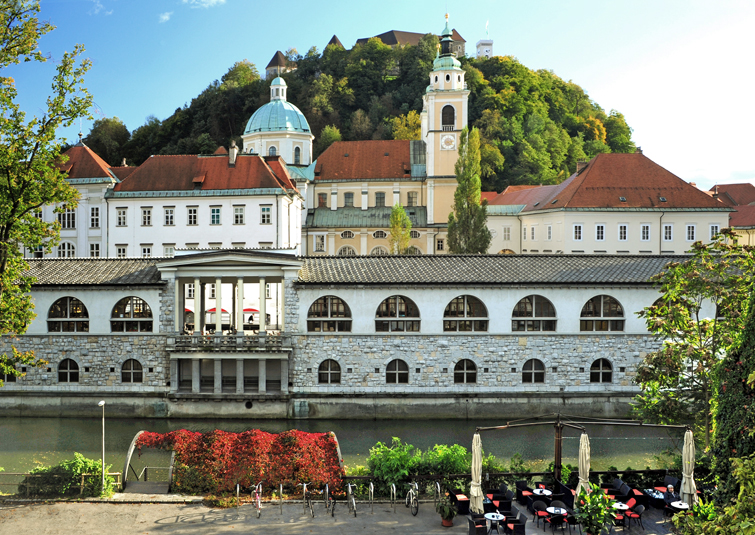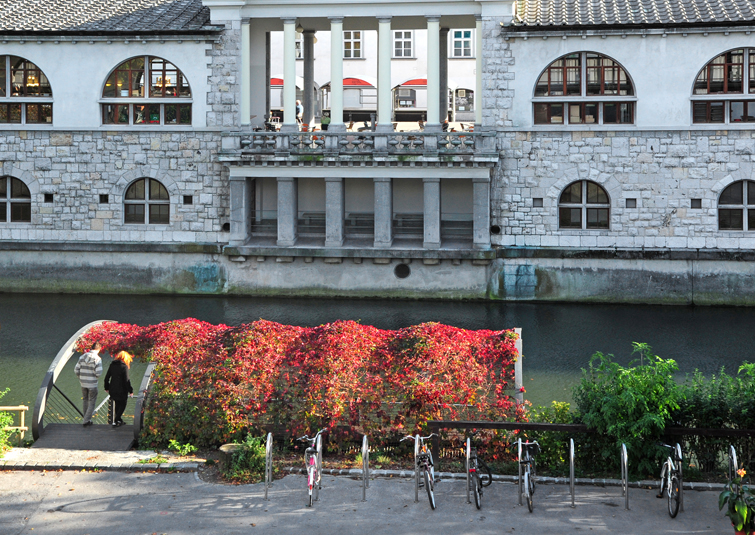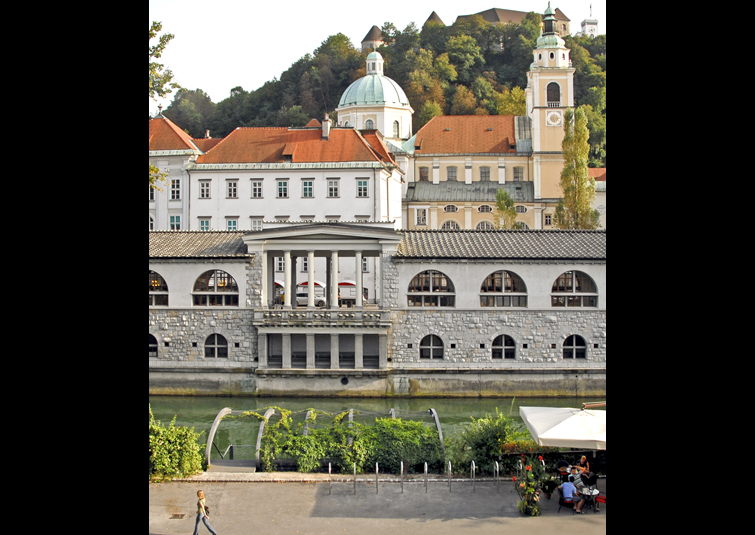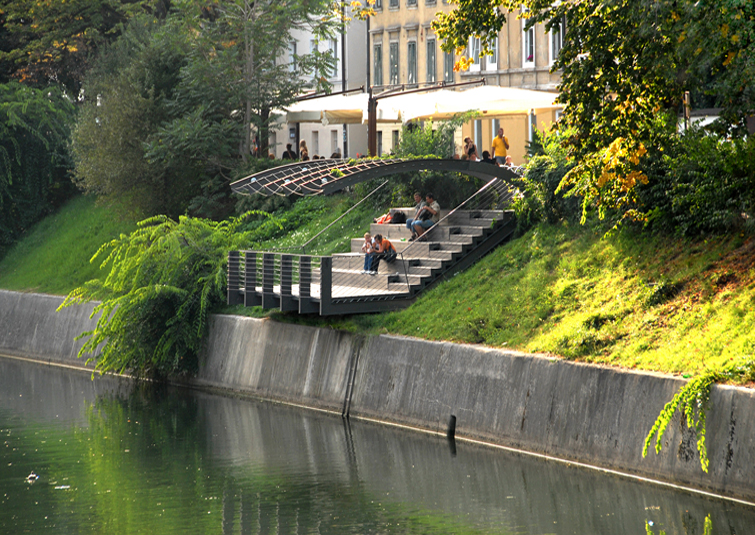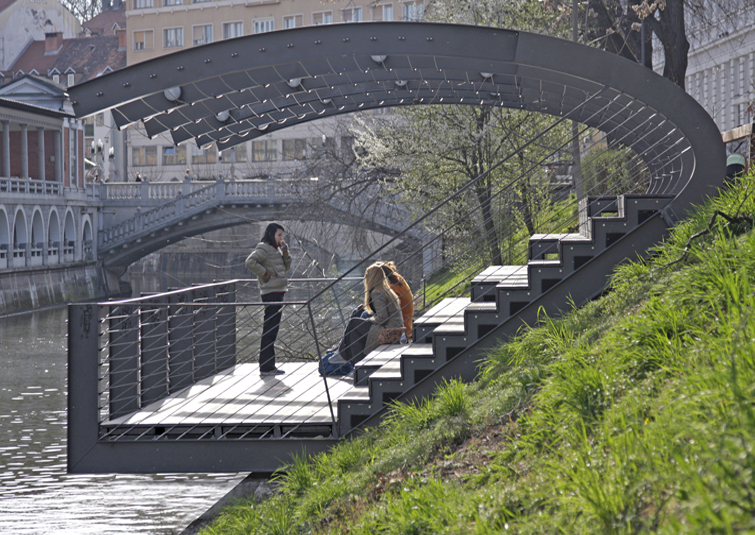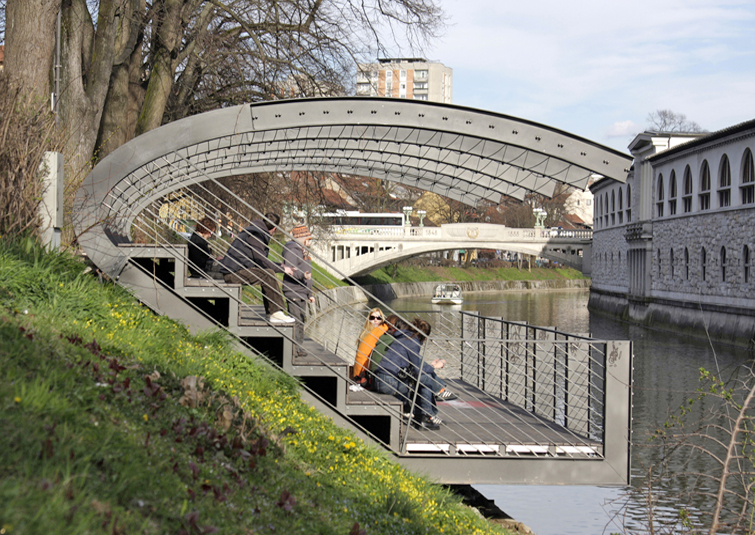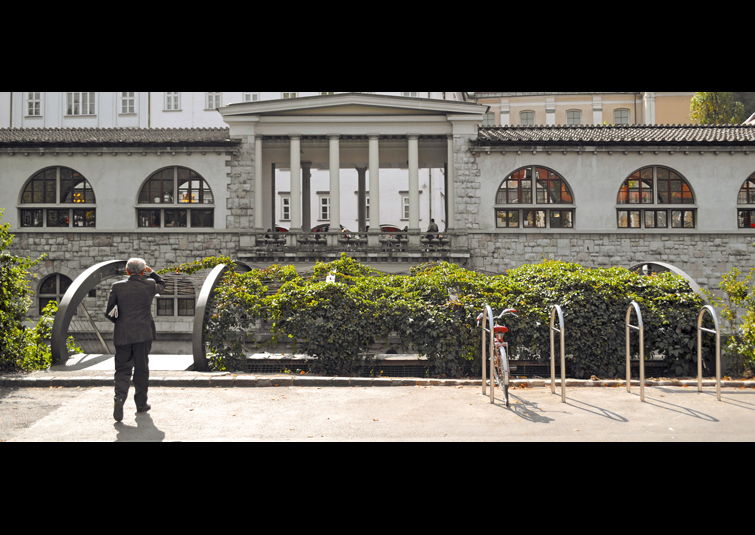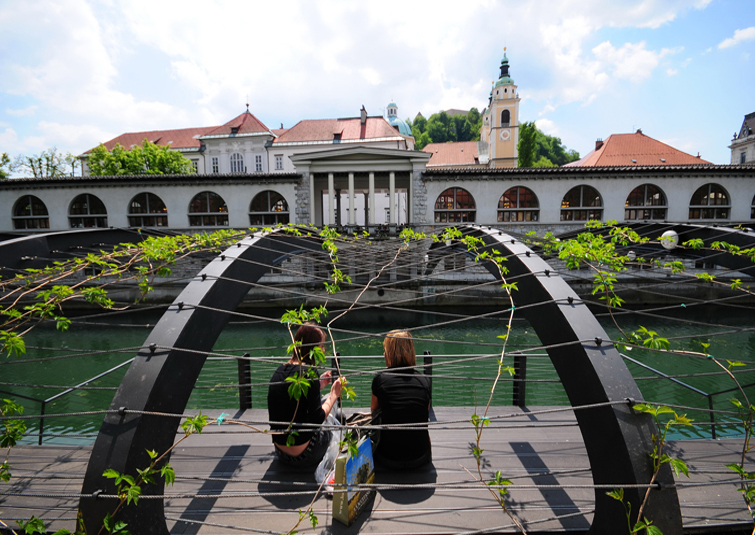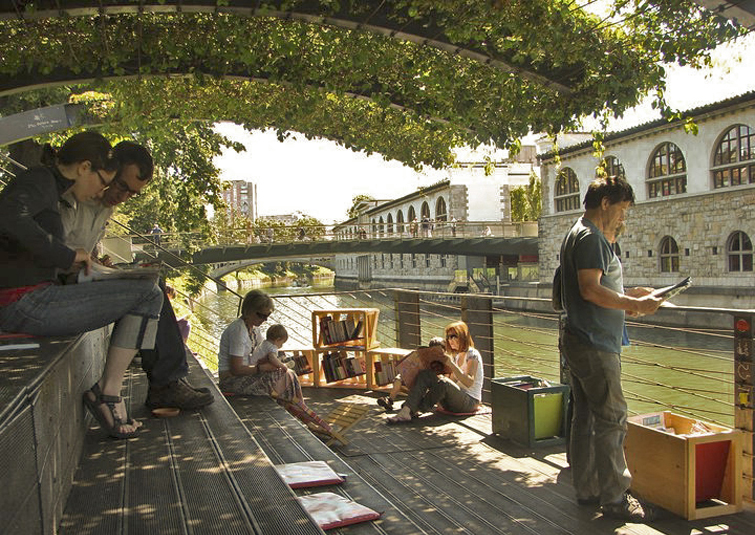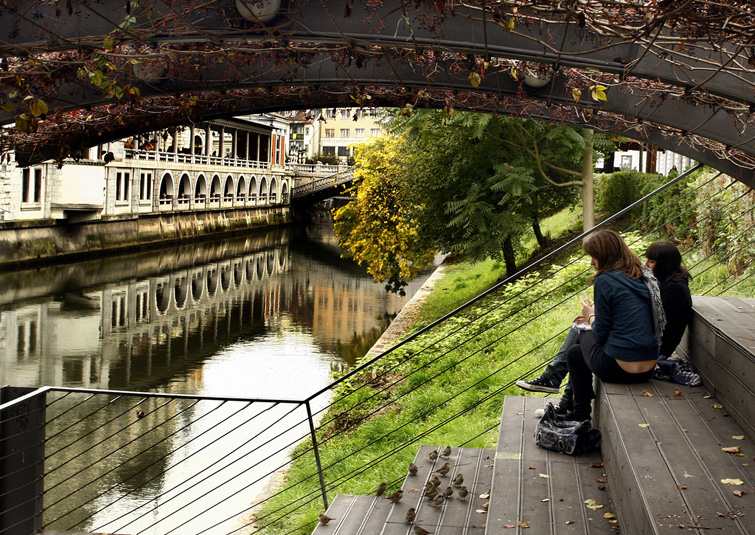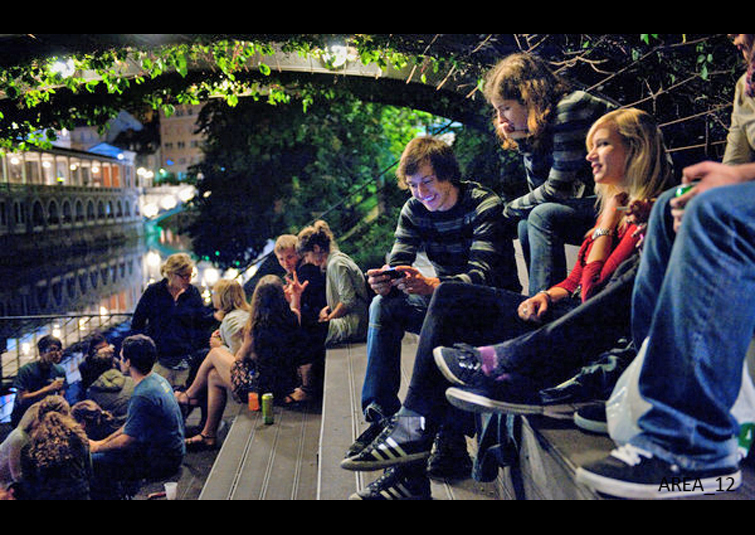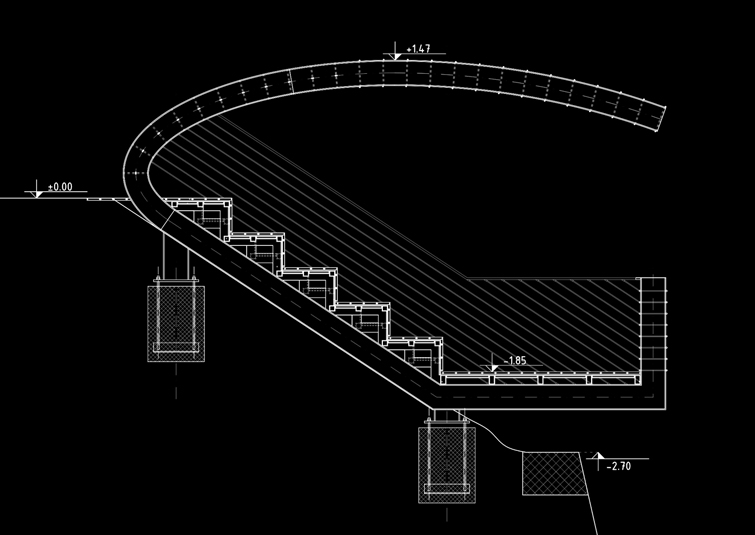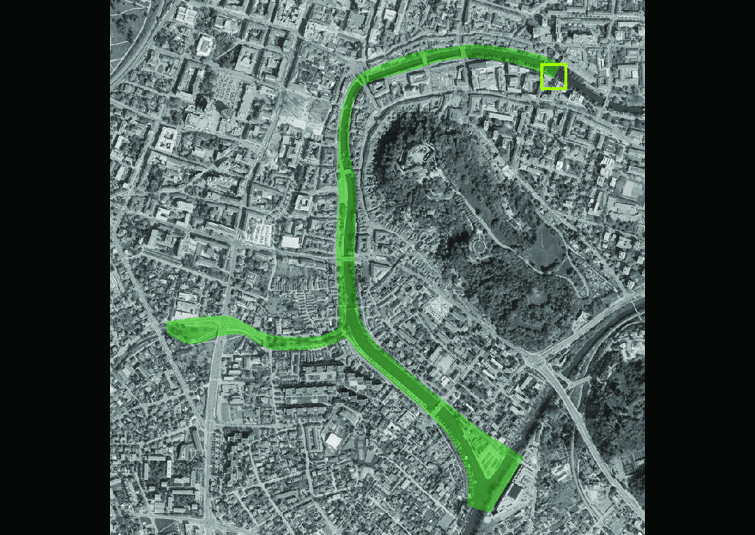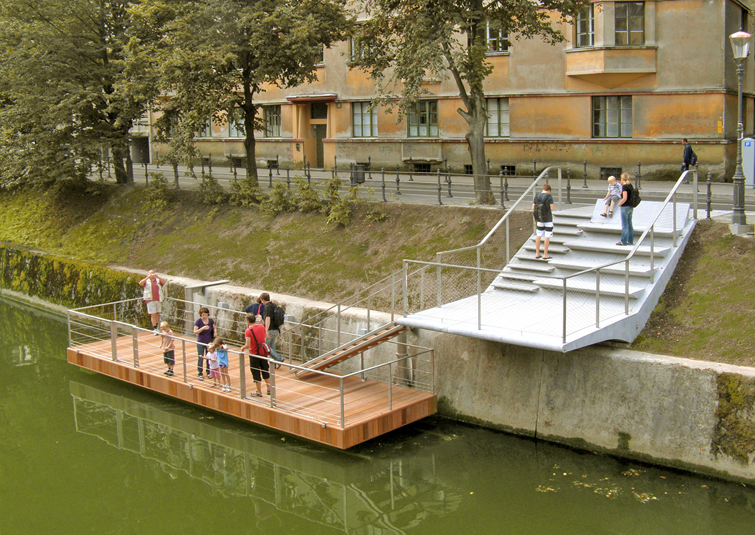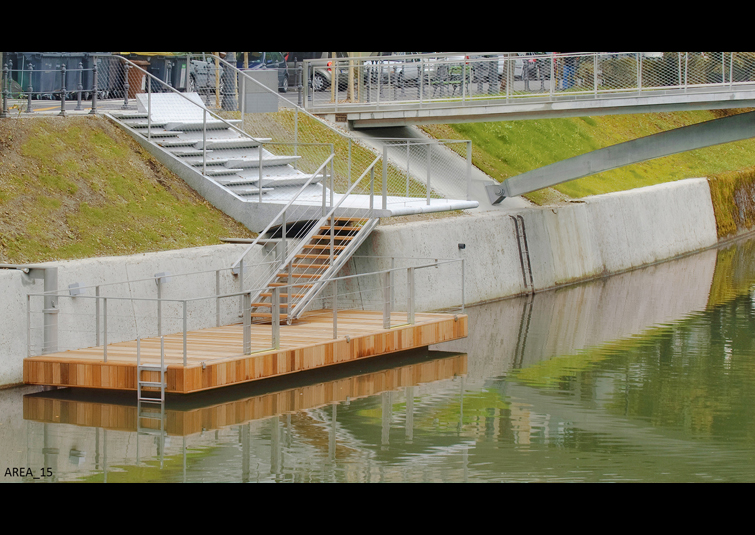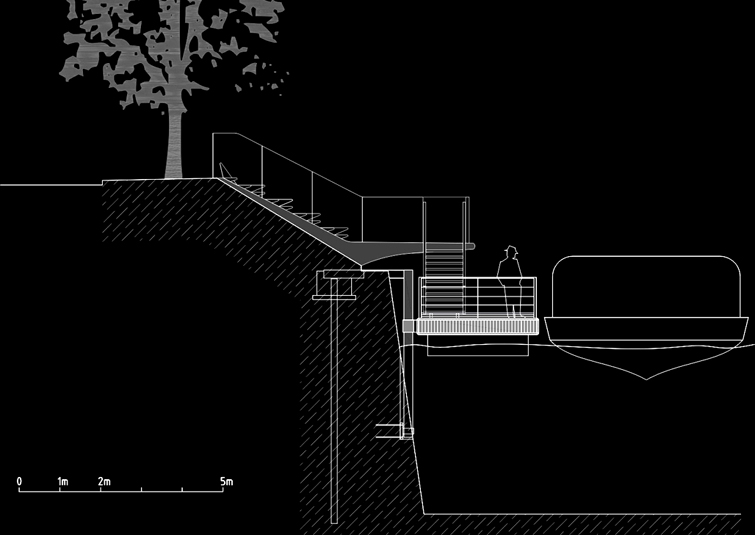

| PROJECT: | PAVILION ON PETKOVSEK EMBANKMENT AND THE PIER AT THE GRAIN BRIDGE |
| SOURCE: | EUROPEAN PRIZE FOR URBAN PUBLIC SPACE - 1st PRIZE |
| CLIENT: | THE MUNICIPALITY OF LJUBLJANA |
| SITE: | RIVER LJUBLJANICA, LJUBLJANA, SLOVENIA |
| AUTHORS: | BREDA BIZJAK |
| DATE: | 2012 |
The promenade along the bank extends from the lock gate on the eastern to the confluence, where Ljubljanica river enters in the city centre on its southern side. As early as 1930 architect PleÄnik began to monumentalize this part of the bank with new bridges, terraced embankments, staircases and parks. The central part of his 2 km long large scale plan represents the monumental central market building he built along the bank on the model of classical stoa.
The main purpose of the rearrangement of the space along the river crossing the old city core after the regulation at the bottom of the concrete channel was to integrate the water element into cityscape and to enliven its banks. Since than, besides of PleÄnik’s works the most of the public places along the river remained not equipped with modern infrastructure, only a little part of their was exclusively used of pedestrians. The narrow streets and squares along the river were over crowded with motor traffic that hindered people to walk, meet, talk and interact. They were designed primarily for riding and parking.
During the last 5 years the new city government was trying to actively influence the negative trends of dispersal by revitalization of the historic city center. This is to be done mainly by rearrangement of public spaces parallel to extending pedestrian zones, which then generate public life and economic vitality. These projects aim to invite people back to walk or bike trough the city and to make car less attractive.
The city government gave priority to realistic and achievable urban design projects that should affect immediate and strong change of quality of public life in the city centre. Parallel to urban design and infrastructural projects the city introduced different measures to reduce motorized traffic in favour of walking and bicycling. Rearrangement of river banks was a joint project of the municipality and the city's public companies. The aim of recent modernization of infrastructure and pedestrianisation of public spaces was to stimulate the economic and social regeneration of the old city. Renewal of historic pavements and street furniture reinforced the spirit of place, meanwhile the renewal of avenues and parks along the river meet new needs of the people and attracted new visitors into city centre. New arranged public spaces stimulated the outdoor city life on the streets and squares along the river by putting nearer the water element. Restricted access of vehicles made public spaces more attractive, comfortable and safer. New built bridges and footbridges enlarged the network of footpaths and cycle lanes. Flexible public transport on demand within car-free areas provides good access to all people.
The gradually built river axis plan convinced the majority of people that sustainability, being politically acceptable, is about respecting tradition, human scale and qualities of urbanity. They have proven in practice how to integrate the river system with human patterns in sense of continuity and uniqueness of places. In this respect appropriate detail solutions of small scale arrangement strengthen the effect of strategic principles.
Re-opening and extension of river promenade on upper-city and lower-water levels attract immediately the people to go to walk from city centre to the botanic garden, the young people to use new accessible banks enjoying the water element, civil society to perform different street art events on bridges and banks, tourist companies to extend their activities organizing thematic fairs, sightseeing tours, restaurants and bars to open their gardens, bicyclists to shorten their path. The success of bringing new life into old city led to new problems for local residents, burden with constant noise, vehicle restrictions, increasing number of visitors, density of walking and bicycling, mono functional supply, lack of services. Most of presented projects were selected by competitions, commissioned directly of donator or built as reconstructions. The planned further projects need to be more discussed with public participation and developed by local action.
